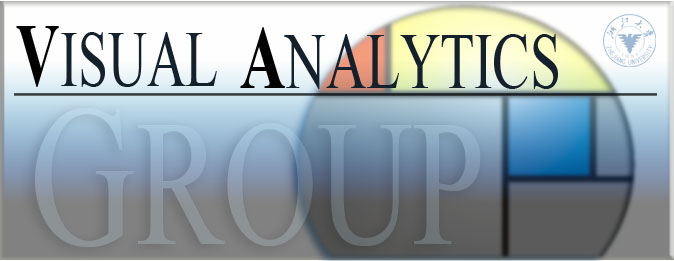Selected Publications
(Selected papers/talks can be downloaded from My Favorite/By years/Talks webpages)
Real-Time Shape Illustration Using Laplacian Lines.
Long Zhang, Ying He, Jiazhi Xia, Xuexiang Xie, Wei Chen.
In IEEE Transactions on Visualization and Computer Graphics , 2010.
This paper presents a novel object-space line drawing algorithm that can depict shapes with view-dependent feature lines
in real time. Strongly inspired by the Laplacian-of-Gaussian (LoG) edge detector in image processing, we define Laplacian lines as the
zero-crossing points of the Laplacian of the surface illumination. Compared to other view-dependent feature lines, Laplacian lines are
computationally efficient because most expensive computations can be pre-processed. We further extend Laplacian lines to volumetric
data and develop the algorithm to compute volumetric Laplacian lines without iso-surface extraction. We apply the proposed Laplacian
lines to a wide range of real-world models and demonstrate that Laplacian lines are more efficient than the existing computer generated
feature lines and can be used in interactive graphics applications.
pdf video bibtex slides
|
Digital Storytelling: Automatic Animation for Time-Varying
Data Visualization
Li Yu, Aidong Lu, William Ribarsky, Wei Chen
To appear Computer Graphics Forum (Special Issue of Pacific Graphics 2010)
This paper presents a digital storytelling approach that generates automatic animations for time-varying data
visualization. Our approach simulates the composition and transition of storytelling techniques and synthesizes
animations to describe various event features. Specifically, we analyze information related to a given event and
abstract it as an event graph, which represents data features as nodes and event relationships as links. This
graph embeds a tree-like hierarchical structure which encodes data features at different scales. Next, narrative
structures are built by exploring starting nodes and suitable search strategies in this graph. Different stages of
narrative structures are considered in our automatic rendering parameter decision process to generate animations
as digital stories. We integrate this animation generation approach into an interactive exploration process of timevarying
data, so that more comprehensive information can be provided in a timely fashion. We demonstrate with a
storm surge application that our approach allows semantic visualization of time-varying data and easy animation
generation for users without special knowledge about the underlying visualization techniques.
pdf video bibtex slides
|
Motion
Track: Visualizaing Motion Variation of Human Motion Data
Yueqi Hu, Shuangyuan Wu, Shihong Xia, Jinghua Fu, Wei Chen
In Proceedings of
IEEE Pacific Visualization Symposium, March 2010, Taibei (Cover Image)
This paper proposes a novel visualization approach, which can depict
the variations between different human motion data. This is
achieved by representing the time dimension of each animation sequence
with a sequential curve in a locality-preserving reference 2D
space, called the motion track representation. The principal advantage
of this representation over standard representations of motion
capture data - generally either a keyframed timeline or a 2D motion
map in its entirety - is that it maps the motion differences along
the time dimension into parallel perceptible spatial dimensions but
at the same time captures the primary content of the source data.
Latent semantic differences that are difficult to be visually distinguished
can be clearly displayed, favoring effective summary, clustering,
comparison and analysis of motion database.
pdf video bibtex slides
|
|
|
Volume Exploration
using Elliptical Gaussian Functions
Yunhai Wang, Wei Chen, Guihua Shang, Xuebin Chi
In Proceedings of IEEE Pacific
Visualization Symposium, March 2010, Taibei (Cover Image)
This paper presents an interactive transfer function design tool
based on ellipsoidal Gaussian transfer functions (ETFs). Our approach
explores volumetric features in the statistical space by modeling
the space using the Gaussian mixture model (GMM) with a
small number of Gaussians to maximize the likelihood of feature
separation. Instant visual feedback is possible by mapping these
Gaussians to ETFs and analytically integrating these ETFs in the
context of the pre-integrated volume rendering process. A suite
of intuitive control widgets is designed to offer automatic transfer
function generation and flexible manipulations, allowing an inexperienced
user to easily explore undiscovered features with several
simple interactions. Our GPU implementation demonstrates interactive
performance and plausible scalability which compare favorably
with existing solutions. The effectiveness of our approach has
been verified on several datasets.
pdf video bibtex slides
|
| |
|

